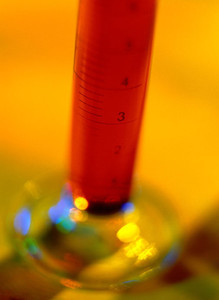On the surface, generic compounds and translational medicines could not appear more different. However, in April 2011, the US National Institutes of Health (NIH) met with academic, governmental, and industry R & D experts to discuss whether translational methods could help to rescue and re-position certain generics [1].
Translational medicine is a branch of medical research that attempts to connect basic laboratory research to clinical patient care, in a cost-effective and efficient manner. In other words, it is the act of taking a scientific discovery from the laboratory and accelerating its use into everyday clinical practice.
Moreover, scientists are becoming increasingly aware that translational research is actually a two-way process. Although basic scientists provide clinicians with new tools for use in patients and for assessment of their impact, clinical researchers, in turn, are making novel observations about the nature and progression of disease that can stimulate further laboratory investigations.
Traditionally, basic research and the clinical setting have been distinct and separate entities, with laboratory scientists, drug developers, and clinical researchers rarely, if ever, meeting to share ideas or knowledge bases. Consequently, new drugs have been developed independently of the clinic, and many compounds failed during pre-clinical in vitro or animal-based testing. Only a small proportion of compounds were then considered suitable for safety testing and clinical trials, and even at these later stages, the clinical relevance of such compounds was rarely truly analysed.
The move toward translational medicine has focused on removing this disconnection so that the whole drug discovery process is more efficient and clinically relevant. Indeed, by its very definition, translational medicine supports the compounds which are the most likely entities to succeed in the clinic setting.
Specifically, translational medicine involves the following stages:
- discovering the origins and mechanisms of disease
- identifying specific biological events, biomarkers, or disease pathways
- using these insights to systematically discover and develop new diagnostics and therapeutic methods and products
- adopting these new diagnostic and therapeutic approaches into the routine standard of care.
Essentially, the advent of translational medicine has been facilitated by both the genomics revolution and the increasing emphasis placed on patient-centric medicine. This is especially good news for the difficult-to-treat, ‘problem’ cancer patients who fail to respond to existing therapies.
For example, clinicians now know that breast cancer can be caused by the over activity of the gene which expresses a protein called human epidermal growth factor receptor 2 (HER2). This results in abnormal, accelerated, cancerous tissue growth, which, theoretically, can be treated with a HER2-targeted anti-cancer agent such as trastuzumab (Herceptin). However, it is equally clear that not every breast cancer patient over expresses HER2 and thus, Herceptin would be ineffective, costly, and wasteful in patients with normal HER2 expression.
The translational approach would see these HER2-negative patients provide bio-specimens from which their own unique ‘molecular disease signatures’ could be identified and synthesised in the laboratory. Further laboratory testing could then help to uncover new molecular cancer pathways, which could be used to develop new diagnostic techniques and newly-targeted compounds, by prompting a clinical trial cascade designed solely at treating these new patient sub-groups.
However, this is fine in principle, but frustrating in practice. Failure rates can be as high as 95% and the average time from target selection to approval is around 13 years [1]. Thus, when these failures are accounted for, the average cost of bringing a new drug to market exceeds US$ 1 billion [2]. This is where generics can come in.
Theoretically, rescuing or repositioning generic drugs, and/or drugs that have been abandoned during the clinical or pre-clinical trial stage, can reduce this time frame, decrease costs, and improve success rates. Such compounds have already been tested in humans, and so detailed information has already been sourced on their pharmacology, formulation, dosing, and potential toxicity. This means that the evaluation of new clinical hypotheses is both more rapid and less costly.
Repositioning has already yielded several successes. Thalidomide was re-launched after proving its efficacy in leprosy and multiple myeloma, and AZT—a compound that proved non-efficacious in cancer—became the first drug to treat patients with HIV [1,3].
Following the meeting in April 2011, the NIH will launch a comprehensive effort to identify appropriate abandoned compounds, establish master agreements, match partners, make data and resource available, and provide a central access point for relevant resources and expertise. This will facilitate a full range of scientific approaches to drug rescue and repositioning—from the unexpected discovery of new applications to targeted matching based on recently discovered molecular mechanisms [1].
Although the strategy is still very much in its infancy, it offers an ideal opportunity for healthcare research to shape its future from past learnings and streamline the drug discovery pathway. We await developments.
Related articles
Generics saved US$931 billion over last 10 years
Influence these two factors and the use of generics will increase
References
- Collins FS. Mining for therapeutic gold. Nature Rev. Drug Discov. 2011;10:397.
- Paul SM et al. How to improve R&D productivity: the pharmaceutical industry's grand challenge. Nature Rev. Drug Discov. 2010;9:203-14.
- Mullard A. Could Pharma open its drug freezers? Nature Rev. Drug Discov. 2011;10: 399-400.








 0
0











Post your comment